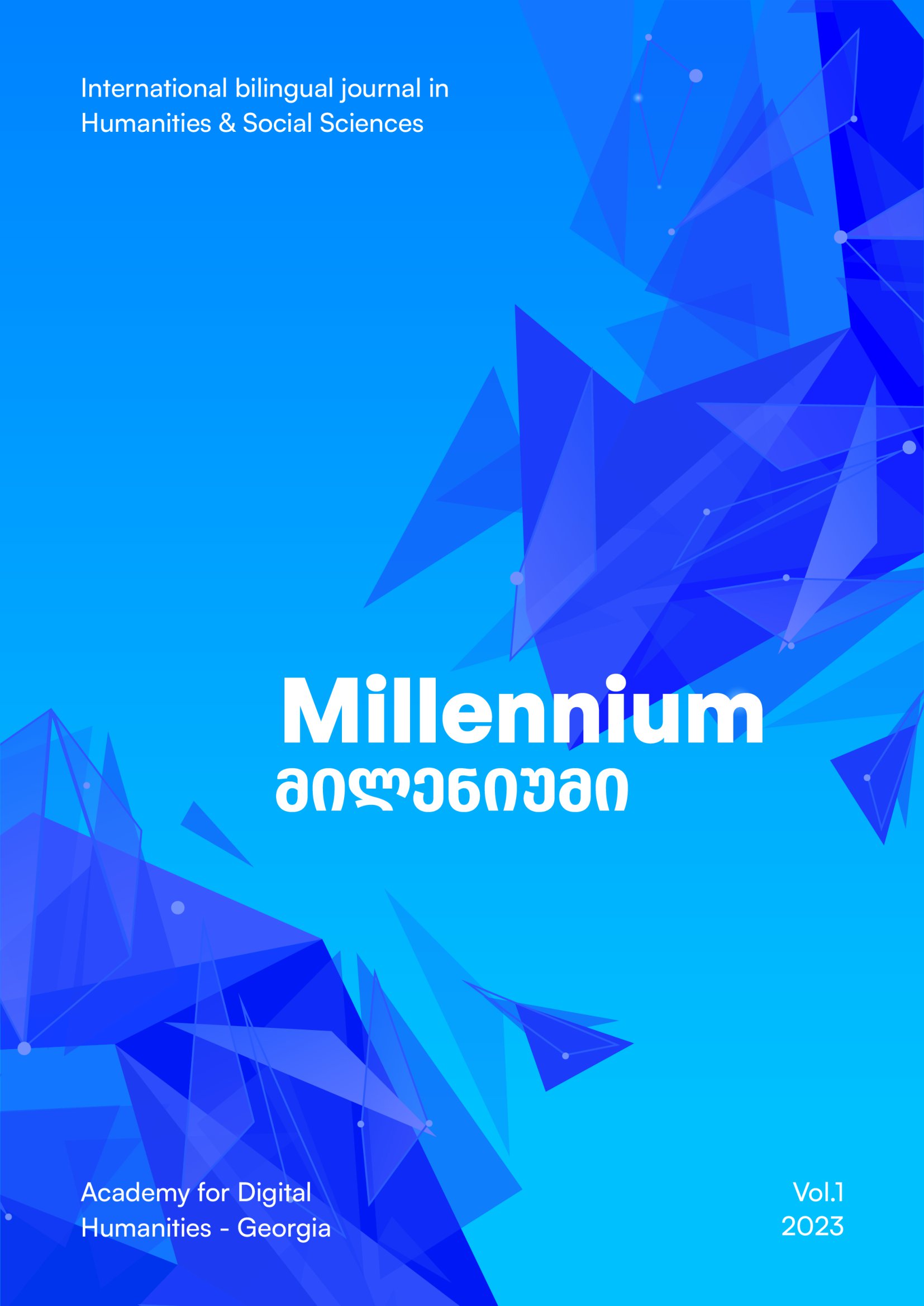The Concepts of miǯnuri and moq̇vasi in “The Knight in the Panther’s Skin” and its Russian Translations (Based on the Translations of Konstantin Balmont, Shalva Nutsubidze and Archil Khalvashi)
Main Article Content
Abstract
The study of fiction literature in the 21st century requires multidisciplinary research, especially when dealing with unique monuments of world literature like Shota Rustaveli’s poem The Knight in the Panther’s Skin. The development of digital humanities and the use of innovative methods and technologies of research have yielded complex and diverse opportunities to scholars. Humanitarian sciences, including Rustvelology, are actively using contemporary methods of research. As a result, digital corpora of The Knight in the Panther’s Skin have been created5 forming the ground for a new scientific field – Digital Rustvelology.
Shota Rustaveli’s epic The Knight in the Panther’s Skin is not only one of the best examples of Georgian literature but a masterpiece of world literature. Since its creation, it has remained popular throughout the centuries and it still represents an object of research of numerous scholars working in diverse fields worldwide. The promotion of The Knight in the Panther’s Skin is largely due to its translations into 56 foreign languages, including Russian.
Research into Rustaveli’s vision of the world is the main objective of Rustvelology. Under the term “vision”, we imply a unity of opinions, thoughts and beliefs which are expressed by means of various concepts and terms, as well as the subject line of the epic and the actions of the main characters.
The present paper analyses Rustaveli’s vision based on two concepts, namely, მიჯნური /miǯnuri/ (‘beloved’) and მოყვასი /moq̇vasi/ (‘friend’). The methodology used in the paper is a corpus linguistic analysis of the epic and its Russian translations, i.e. the complete poetic translations made by Konstantine Balmont, Shalva Nutsubidze and Archil Khalvashi. Based on the empirical material, the paper analyses the issue of transfer of the above-mentioned concepts in the process of translation. The paper evaluates the degree of equivalence and the relations between the original text and its translations. The empirical material has been obtained by means of a beta-version of the parallel corpus of translations Rustaveli Goes Digital.
The Table below illustrates the diversity of equivalents of მიჯნური /miǯnuri/ (‘beloved’) and the degree of gradation in the Russian translations by Konstantine Balmont, Shalva Nutsubidze and Archil Khalvashi.

In Balmont’s translation, the equivalents of მოყვასი /moq̇vasi/ (friend) are друг (25), друзья (2), дружба (3), дружной (1), братя (1), товарищ (1), любимый (3), любительница (1), любить (2), любовь (3), милый (1). In Nutsubidze’s translation, the equivalents of მოყვასი /moq̇vasi/ (‘friend’) are друг (13), друзья (4), дружба (1), дружеский (1), любимый (6), влюбленный (3), возлюбленный (1), любить (1), любовь (5), милый (2), миджнур (1), родной (1), побратим (1). In Khalvashi’s translation, the equivalents of მოყვასი /moq̇vasi/ (friend) are друг (16), подруга (2), друзья (6), дружба (4), дружеской (1), собрата (2), товарищ (1), любимый (11), влюбленный (1), любить (1), милый (1). Our corpus linguistic research of the Russian translations of the epic has revealed the diversity of equivalents used. The analysis of the translations has yielded the contextual and functional equivalents of the words მიჯნური /miǯnuri/ (‘beloved’) and მოყვასი /moq̇vasi/ (‘friend’). The investigation has proven that Nutsubidze and Khalvashi apply the method of lexical borrowing when translating the two above-mentioned concepts. The aim of applying lexical borrowing is to preserve an adequate degree of the aesthetic and emotional impact of the original concept in the translated versions.
